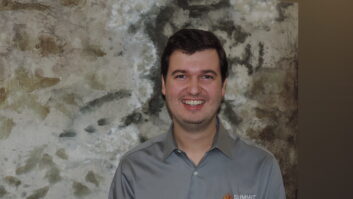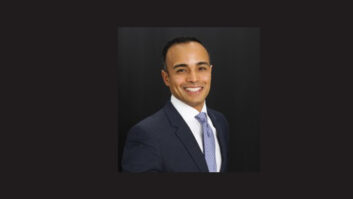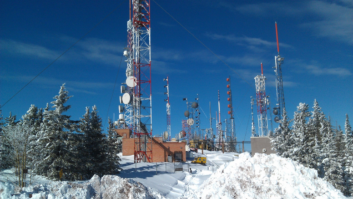PROLIFERATING PIRATES
On the closure of FCC field offices and the proliferation of pirates and jammers:
The Federal Communications Commission is considering a monumental change that will jeopardize its ability to control interference for the private sector. According to Radio World (http://tinyurl.com/RadioWorld-FCCEBDownsizing), the plan under consideration “would reduce the number of field agents from 63 to 33 and reduce the number of director positions from 21 to five and the number of field offices would shrink from 24 to eight.”

Robert Gonsett Here in southern California, for example, the San Diego field office would close and the Los Angeles office would carry significant new responsibilities by watching over perhaps six or seven states, including Hawaii, while at the same time operating with a skeletal crew. So drastic are the anticipated cuts that the staff would only have time to handle public safety interference cases and little else. This is going to create a lawless environment where pirates and jammers will flourish.
Case in point: Many months ago, four FM pirates (illegal broadcast stations) popped up all at once at scattered locations in the San Fernando Valley. The FCC knocked them all down. In the past few months, two of those pirates returned to the air, and one of those appears to be running increased power. The reason that the pirates have returned may be a little-known brand-new FCC policy: Hands-off pirates unless they are causing direct interference to an authorized broadcast station, and the FCC isn’t busy with higher priority cases, like public safety interference. But the FCC is always busy with public safety cases. So, by largely dismantling pirate enforcement, the seeds to create a lawless environment have already been planted. (We have become aware of this hidden hands-off policy by talking with different individuals and FCC agents across the country and connecting the dots. It wasn’t hard to do.)
The fact is that our local FCC offices have traditionally struggled to find time to deal with pirates with so many higher priority cases pending — but they have, in fact, found the necessary time and have given us clean airwaves here in southern California. Now with the hands-off policy in place, pirates are guaranteed to proliferate. Even the most egregious high-powered pirates will go unscathed if FCC field staff is cut in half because public safety interference cases will occupy the FCC’s every waking moment. Unscrupulous people will ask, “Why bother to file for a low-power FM permit when we can just start broadcasting instead, and why limit ourselves to low power?”
Let’s turn to the TV arena. Just over a year ago, the FAA accused a southern California UHF-TV station of causing interference to a high altitude en-route VHF channel (133.2 MHz) used by aircraft. So serious was the reported problem that the TV station voluntarily left the air while private sector engineers worked overtime to assess the situation. The important point is that the FCC was ready to dispatch its own engineers at a moment’s notice if need be (we made telephone contact with the San Diego FCC field office to make sure of this).
Now imagine the situation with greatly reduced FCC staffing: There is no public safety issue because the TV station left the air and that action seemed to resolve the intermittent interference problem. Too bad if the station couldn’t return to the air quickly — that would be viewed as a problem for the private sector to address. (As it turned out, there was never conclusive evidence that the broadcast station was at fault; the FAA located a stuck microphone problem at its control center, the TV transmitter tested “clean” and the station successfully returned to the air without making any adjustments whatsoever.)
If FCC Enforcement Bureau staff and field office reductions go into place as now proposed, the broadcast community won’t be able to count on FCC field offices for any type of assistance. RPU jamming? Too bad. Two-way radio interference? A pity. A competitor doing something illegal? Forget it. Some other government agency using questionable engineering practices and accusing you of causing interference? Good luck. You can bet that a new generation of jammers and pirates will crop up knowing full well that the FCC’s field offices have been emasculated and will do nothing.
Fast action is needed (a) to reverse the FCC’s “hands-off pirates policy” and (b) to keep the commission from making drastic cuts to the number of field offices and the number of field agents. This is a one/two punch we don’t need. With interference and communications complexity increasing, we need more field engineers and more FCC field capability, not less.
Please forward this editorial to your director of engineering and general manager along with a request that an urgent appeal be made to Congress in Washington. Appeals must be made now to the U.S. Senate and the House of Representatives by as many stations as possible. Unless the FCC’s “hands-off” policy toward pirates is reversed, and its drastic downsizing of field offices and field personnel is voted down, we are on the road to anarchy.
Robert F. Gonsett
President
Communications General Corp.
Fallbrook, Calif.
LPFM CONCERNS
Thank you very much for nice story about my book (“Radio Reading for Your Winter Blues,” Jan. 14 issue). It’s been 15 years out of the business for me, and I do miss it.
Regarding LPFM comments: It appears LPFMs and translators are going on unabated at the FCC, but not where I anticipated them to be. My LPFM concerns 15 years ago related to small markets, where a 25- to 100-watt LPFM transmitter literally covered the market as well as any commercial station. My observation now is that not many LPFMs have been placed in small markets, most in metro areas doing niche ethnic programming. Satellite and Internet radio have become the biggest competition in small markets and they can’t sell local advertisers.
But it’s a fast-changing world.
Paul C. Hedberg
Naples, Fla.
PROGRAMMATIC
Thank you, Radio World, for the Leslie Stimson interview with Mike Dougherty (“Jelli: Programmatic Is Radio’s Future,” Jan. 14) about the absolute importance for the radio industry to greatly — and quickly — incorporate electronic spot, digital and mobile platform buying in its business model.
These programmatic buy/sell services also provide real-time accountability and proof of performance to advertisers, something that TV has been doing far more effectively than radio for a long time now — at radio’s expense, literally.
And, with the ability of “programmatic” technology to drill down more deeply into what an individual radio station may offer in terms of desired demographics, market rank and so on, I think there’s actually a better chance that the station would receive more advertising, on one or more of its ad platforms, if it participated in the technology.
Everything, seemingly, is going digital these days, and for good reason. The radio industry, I’m sorry to admit, has lagged way behind other advertising media in this regard. In a different aspect of the industry, we can’t even get our act together and reach a final consensus on which digital signal transmission standard to adopt. HD Radio has not been readily and universally accepted on FM, especially in small and medium markets, and the AM band is in even worse shape in terms of digital-signal technology adoption. But, this is, perhaps, a different topic for a different discussion.
I think time is running out for radio, if the industry doesn’t get its act together, and soon, in figuring out and establishing an effective presence in the digital-content world. The digital-delivery and operations competition that radio faces is getting more intense, not less. Programmatic technology, I believe, is a critical component of the service that radio needs to provide to potential and current advertisers if it is going to survive, and for years to come.
Innovate, radio, or we are gone.
Robert E. Lee
Lee MediaWorks LLC
Austin, Texas

iStockphoto/zsooofijaANTENNAS IN TREES
In regard to Dan Slentz’s article “Can I Put My Antenna in a Tree?” (Feb 1, 2015), he needs to understand that a tree grows from the top, not the bottom. That is, if an antenna is mounted at 50 feet in an 80-foot tree, the antenna will always remain at 50 feet.
As the tree grows, the trunk gets larger and may eventually “swallow up” the mounts, but the elevation of the antenna and the length of coax needed will remain the same.
I agree that a tree mount is not the best choice, but not for the reason he states.
I very much enjoy your publication and read it cover to cover as soon as it arrives.
Jim Schultz
Owner
Schultz Communications
Warren, Conn.
SKOTDAL’S TAKE ON AM
KKRO licensee Andrew Skotdal’s comments, about the migration of AM to digital operation in the abandoned VHF channels, are all too obvious.
It never ceases to amaze me how everyone from the engineering head of CBS Radio to an FCC commissioner keeps trying to sell this idea that AM can be saved!
As a former major-market and medium-market AM licensee, I agree with Mr. Skotdal’s assertions that the train has left the station; and I am pretty sure that happened around 3 p.m. on Sept. 25, 1999. (Joke.)
We’re all going nowhere until the commission faces the fact that digital radio on VHF is here. The governing body that regulates radio has to come to grips that regardless of the protestations the big operators and others, we must make this change like now, today and quit fooling around!
Lloyd Bankson Roach
Meetinghouse Media Inc.
West Chester, Pa.
The commentary “AMs Should Focus on VHF Migration” by Andrew Skotdal offers suggestions that all AM broadcasters should pursue regardless of their market size or financial position with their facilities.
Engineers that I know and respect having been talking about this at least for the last decade, aware of the quality problems facing AM radio signals and interference.
Broadcasters are always hoping for some miracle or some FCC action that will change the downward spiral of AM radio. It will only happen if some sound engineering concept is employed as a fast, easy and not expensive burden on operators and listeners.
The FCC needs to be on board into taking action now and not waste time or money investing in HD Radio. If HD Radio was so successful, why do the operators need to have a translator working with their HD channels for people to hear the content on HD? Simple. No real display of HD receivers in cars or home.
If you can’t hear it, you got nothing.
Let’s get moving in the AM-VHF migration movement now. There will be room for every AM broadcaster to move too and get rid of those towers, sell the land and recoup some of the losses over the years incurred by the downfall of AM radio advertising, which cannot be sustained very much longer.
The content for the most part is available on AM, but the quality and delivery system is no longer in tune with the times and the digital world
Carl Como Tutera
President
Star Over Orlando
Licensee of WRSO(AM)
Orlando, Fla.
I read, with great interest, Andrew Skotdal’s commentary on the state of AM radio stations. Andrew is correct that many AM licensees can’t afford the S-L-O-W migration path HD Radio provides for a lot of reasons, with the lack of financial resources being the primary one.
It’s beyond time for NAB to secure a new home for AM radio station licensees from the FCC. AM can’t possibly hope to garner the entire Channels 1-6 spectrum. Let’s see; AM stations have 10 kHz bandwidth. Channel 6, everyone’s logical choice, since it is adjacent to the current FM band, would enable full migration, if 10 kHz bandwidth is implemented. Want 200 kHz? Buy an existing FM station!
Requiring manufacturers to make radios that will enable listeners to be able to receive whatever migration path is used is not the American way. I was on the other side of this in the early days of my career. I saw opportunity in FM radio when, frankly, you could buy a station for peanuts. The downside? Very few people, especially cars, had FM radios. We all know how that eventually worked out. This time is different. The increase in the noise floor in the standard broadcast band over the years has been simply horrific. All those FCC-mandated stickers on just about everything about “this device must not cause interference” are worthless verbiage.
The answer? Packing the FM band with ever more translators is, in my honest opinion, not a viable answer. Migrating the AM band to a new home, the 6 MHz spectrum of Channel 6 being the coveted spectrum, is vital. The sooner this begins the sooner listeners will again have viable programming choices.
Bill Wertz
Wertz Media
Friday Harbor, Wash.












